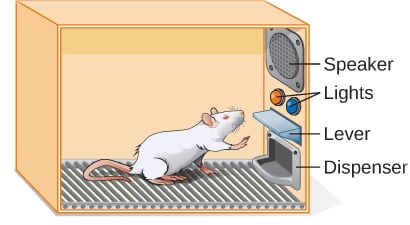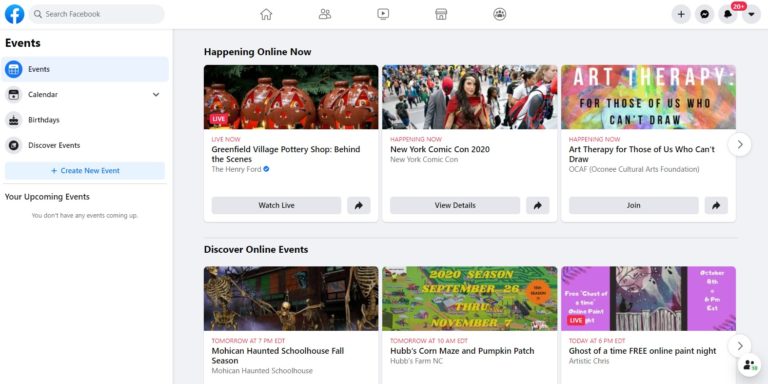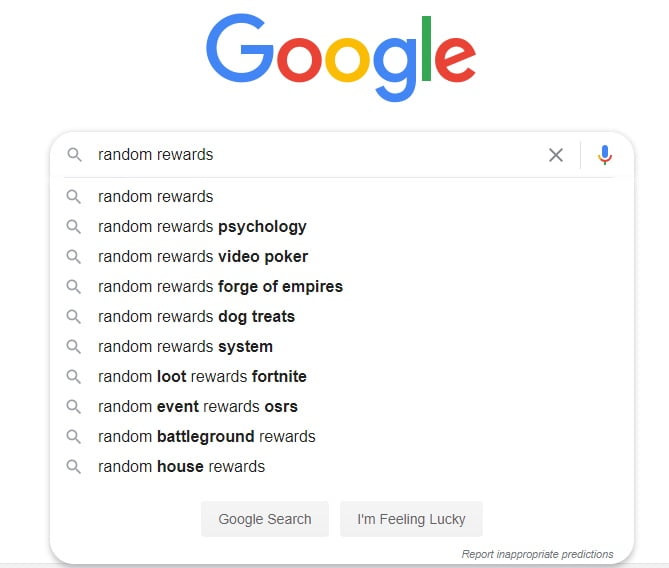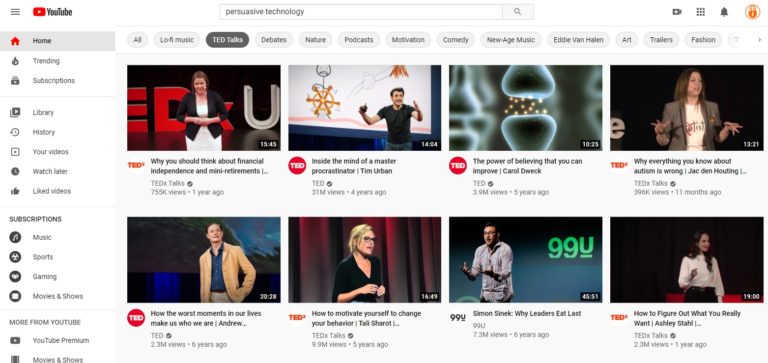Recognize the Weapon to Resist It
Have you ever decided to check your social media feed for just 5 minutes and found yourself still browsing hours later? Or thought to indulge in just one YouTube video before bed and stayed up binging till 2am instead? Or started a car, glanced at your phone, and were still sitting in the driveway half an hour later answering messages, running the engine, wasting gas and polluting the environment?
We have all been sucked into the vortex of something interesting and unexpected on our screen that we JUST NEEDED TO SEE.
That’s random rewards in action. It is built into every digital media product we use.
Here is how it works.
Random rewards, or intermittent variable rewards, is the behavioral psychology principle originally discovered by an experimental psychologist B.F. Skinner in the first half of the 20th century. You see, professor Skinner experimented with the principle of reinforcement to control his subjects’ behavior. Who were his subjects? Rats and pigeons.
B.F. Skinner thought humans are not that different, declaring that people are “beyond freedom and dignity” in his book with the same title:
Dr. Skinner built a rather simple contraption that went down in history as the Skinner Box, or if you prefer a fancier scientific term – an operant conditioning chamber. He put lab rats in a box that isolated them from the external environment and had a behavior indicator such as a lever or a button. When the animal pushed the button or pulled a lever, the box would deliver a positive reinforcement of the behavior (food) along with noises and lights.

Source: Wikipedia
A subject isolated from the world, rewarded for pressing buttons?
Does it remind you of something? Video gaming, perhaps? Or any of us furiously typing into our phones?
Both animals and humans can be trained to repeat the behavior by using rewards and punishments. Animal trainers use operant conditioning to train dogs to obey commands, or to train circus animals to do tricks. Rats and pigeons in a Skinner Box were trained to tap on the buttons to get food.
Just as we are all trained to tap and swipe on our devices to get our digital rewards: a “like” to our post, a tag to our picture, new “follow” to our channel, loot in the video game, a scandalous news update, new email in our inbox – the list of rewards is endless. When we pick up that phone, we usually do not know which one we are going to get. And that is no accident.
A curious fact that Dr. Skinner discovered in his experiments on operant conditioning is that one of the most effective ways to motivate repeated behavior is to make the schedule of rewards random. His lab rats and pigeons tapped on the button MORE when they did not know when the reward was coming. Variable ratio reinforcement was the key to keep lab rats excited. When the rewards were predictable and regular, their enthusiasm for the behavior was reduced. It’s like when they knew what was coming, they were sort of… bored?
Random Rewards and the Attention Economy
Users’ attention today is a precious commodity in an increasingly competitive digital media landscape. There is a good reason it is called the attention economy – user attention can and will be extracted. No matter the costs to the user.
Eyes on the screen means advertising income and profitable data mining. Tech developers cannot allow their customers to be bored. Ever. The average human attention span is now a measly 8 seconds – less than that of a goldfish.
If the user is not interested, surprised, intrigued, or entertained within 8 seconds of looking at your page, they will move on to another app or screen.
Random rewards to the rescue!
The dark psychology behind effective app design boils down to 3 steps: design a cue, activity, and reward to program humans to use the app as much as possible.
An official industry term for this is “user engagement”. User experience (UX) design of digital products is the merger of technology and psychology that very few people outside the industry know about.
Digital habits reside in our subconscious mind, where they have been skillfully planted by the creators of highly engaging consumer technologies. First these apps were just convenient shortcuts to accomplish various life tasks like keeping in touch with friends. Then they became a necessity. Today there is a movement to start calling them “digital utilities”, apparently as essential as running water and electricity.
Like genetically modified crops, these digital weeds grew and took over the garden of our life.
Predictably so. Looking back, even their creators admit that these tools were engineered to be addictive. Traditional human ways of socializing and entertainment were slow and boring by comparison, so they were pushed out.
It was an evolutionary process – the survival of the fittest.
Random digital rewards often are more stimulating than the sights and sounds of the real world. A well-designed app becomes irresistible, and the user is hooked. They will not be able to fight the temptation to check what pleasant surprises await them within the app next time. And they will return again and again.
We are just so curious. And we love novelty and surprises.
The House Always Wins
Professor Skinner himself compared his invention to a slot machine, admitting that he made his pigeons into gambling addicts. And that one can do the same with humans, which is exactly what casinos have done for decades. Slot machines account for 80% of casino’s profits, and they achieve this results by using the principle of variable ratio reinforcement. Gamblers keep pressing the button in anticipation of random reward, but they don’t know when it will come. The system is programmed to keep them gambling as long as possible, but not to the point of frustration that they will give up and quit.
No, the win eventually comes, and floods the reward centers of their brain with dopamine, reinforcing gambling addiction.
Gambling addicts trapped in the “zone” by the slot machines are actually not that happy. Rats were probably not that happy either as they were compelled to keep pressing the button in hope that the reward would come on the next try. Operant conditioning is not about making the subject happy. It’s about changing their behavior.
For both rats and people, the user interface was built to keep them engaged for as long as possible.
Skinner’s methods of behavior modification were subject to a lot of criticism when they were made public. His opponents were justifiably concerned that such techniques could be used by oppressive governments to control their citizens.
Little did the critics know that a few decades later billions of humans on the planet would become lab rats that carry little Skinner Boxes called smartphones in their pockets. Voluntarily.
Even rats got a break during the night when Professor Skinner went home! But we often keep our phones by our bedside, denying ourselves a good night’s rest from being a lab rat of digital manipulation.
Because we can’t stand missing out on the rewards our devices dish out randomly throughout the day, giving us those addictive dopamine hits to the pleasure centers of our brain. Playing the slots of social media updates, online gaming, Internet shopping, and unexpected cute cat videos. A real slot machine cannot follow you out of Vegas, but an online casino can.
Original Skinner Boxes had very few options for reward and punishment: basically food and electric shocks. Digital technologies of today have no such silly limitations.
With big data collected on every user, they have thousands, maybe millions of highly individualized “pressure points” that can be used for behavior modification.
Operant conditioning is utilized by big tech companies to program user behavior with precision.
Here are just a few familiar examples.
Illustration 1: Your smartphone screen

Photo by Sara Kurfeß on Unsplash
A buzz from our phone, a pop-up message, a red circle of new activity in the corner of an app unleashes a wave of anticipation in us: what kind of reward awaits us? Let’s pick up the phone and find out!
Illustration 2: Facebook

Social networking sites have random rewards at the very core of their business model to keep users engaged. The social feedback loop of random rewards supercharges the addiction.
Facebook’s “random rewards” feed delivers a stream of content which is PICKED SPECIFICALLY FOR YOU.
Both organic (updates from friends) and paid (ads) traffic is selected by the algorithm to be rewarding for the specific user (you) based on their extensive online data dossier.
Illustration 3: Instagram

Same principle with a more visual twist: the emphasis is on graphic content: photos and videos. Instagram is owned by Facebook. Somebody liked my photo – who was it? Is that the one person I wanted? Or someone completely unexpected?
The slot machine of random rewards is activated: tension, anticipation, reward. Rinse and repeat. Ad nauseum.
The updates are picked by the algorithm that is changing all of the time, with machine learning getting better every day at guessing what YOU would like to see.
Illustration 4: Twitter

Due to the short format of tweets, Twitter can pack a lot more random rewards into a single page than other social networks. Users can quickly scan through the tweets and pick those they find the most interesting.
Continued user engagement is guaranteed.
Illustration 5: Google Search

The results are relevant and intellectually stimulating. They answer our questions instantly. What is curious is that two different users asking the same question would get different personalized search results based on their previous search history and geographic location. Giving them the most relevant (and rewarding) answers.
Which may not reflect the truth, might confirm their existing biases, but that’s beside the point.
The user is happy.
Illustration 6: Fortnite

Fortnite is the game that gives kids quests and objectives to complete, and then rewards them with extra skins and emotes (dances/gestures). Rewards for pressing buttons – remember the rats?
Free cheese can only be found in a mouse trap. Kids are playing the game obsessively.
Video game designers are the masters of random rewards. Artificial Intelligence is the god behind the game that distributes rewards to the players if it senses that the gamer is getting bored or frustrated. Loot boxes, virtual armor, weapons, extra lives, keys, coins, monsters spectacularly killed – the player is instantly re-engaged in the game. Which is the whole point.
Predatory gambling tactics of in-app purchases are also used to purchase rewards with real money and are often aimed at young users. Creators of Fortnite have been accused of this, but really any game with in-app purchases can be a slippery slope.
Gamification – the use of game design for non-gaming digital products, like EdTech marketed to our kids’ schools, is another disturbing example of manipulative operant conditioning.
Illustration 7: Pinterest

The ultimate dreamcatcher for your dreams! A virtual vision board of everything you want to accomplish, places to visit, rooms to redecorate, inspirational life quotes to remember. And an endless stream of random, unexpected, and beautiful pictures to inspire you.
Just pin it to your board.
Illustration 8: Amazon

They own our entire purchasing history. They know us so well, they can subtly suggest the most tantalizing products on our page that will strike our fancy. All that you see are “items related to your views” and “inspired by your purchases”.
And therefore, things you are most likely to buy.
Illustration 9: YouTube

YouTube analyzes your previous viewing history (and the rest of your digital footprint) to recommend just the videos that would keep you engaged – even if it rewards the most base instincts of human nature.
It would even autoplay them for you if you forgot to turn autoplay off – which is another design technique that utilizes the path of least resistance.
Illustration 10: Netflix

“Netflix binge” is an actual term in the English language, thanks to the platform’s viewing suggestions algorithm.
Hello, sleep deprivation!
The examples can go on forever, but let’s stop here. Some apps are more sinister than others: think Tinder – delivering random rewards in the form of actual humans accepted or rejected on the screen.
Random rewards are integrated into every digital platform – from your work email Inbox to your social life, education, entertainment, fitness – everything. And they are getting more sophisticated by the day.
How to Resist Random Rewards
The question is: what can we do about it? Do we just play along like lab rats, or do we actually have a choice?
Is there a way to reclaim your life?
The solution comes from the wisdom of the classics. Famous psychologist Carl Jung gave us the formula:
“Until you make the unconscious conscious, it will direct your life and you will call it fate.”
Therein lies our answer. Automatic digital habits took over our lives. They reside below the level of our conscious understanding. We did not choose those habits, they were planted in our brains by the masters of persuasive technology.
Optimized for their profit – not for our well-being.
Until we learn to recognize their manipulative techniques, we would not be able to control our digital lives. The implications of this loss of agency are apocalyptic. With more human activities migrating to the digital space, this means we hand over control of our destiny to Google, Facebook, Amazon, and thousands of other puppet masters.
There is no more free will.
We have to bring our impulses to our conscious awareness, and engage our rational mind in making a decision. Between the digital trigger and our response there is a space. A pause. Would I choose to obey the impulse that the consumer tech industry has planted in my brain, or do I say no this time? Which option is optimal for MY well-being at this very moment?
It’s not a moral dilemma. Either one is ok, as long as the choice is YOURS.
The goal is to extract value from our digital tools without experiencing the negative side effects to our productivity, relationships, and mental health. We need to disrupt the automatic response, slow down and reflect: “Why am I doing this? How does this make me feel? Can I meet this need offline?”
There is another way to disrupt the interface of “user engagement”. Until Elon Musk puts a wire in our brain (which I would not recommend), our ultimate defense strategy against the weapons of digital manipulation is universal, simple, and free.
Step out of the Skinner Box. At least for a few hours a day.





People don’t have enough attention to read this article anymore, but it is a good one !
You just gave me a solution that i never would have found. Merciii
Everybody needs to read this and go unplug.